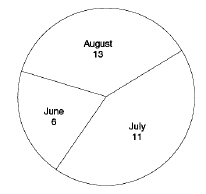Read the following excerpt from a health record: Plan Recommendation: We need to perform an endoscopic retrograde cholangiopancreatogram or magnetic resonance cholangiopancreatogram. Given the less invasive nature, I recommended Ms. Mendel have an MR cholangiogram, which is scheduled for later this week. If the results confirm primary sclerosing cholangitis, we will begin medical treatment and then schedule a percutaneous hepatic biopsy. Which of the following statements is NOT true, given this health record information?
A. Both the endoscopic retrograde cholangiopancreatogram and the magnetic resonance cholangiopancreatogram will give the health care professionals a map of the bile vessels (ducts) and pancreas.
B. The patient has been scheduled to have a test that will take a record of the bile vessels (ducts).
C. If the results confirm the patient's bile ducts are inflamed and hardening, the patient will have a liver biopsy.
D. The endoscopic retrograde cholangiopancreatogram involves using an endoscope, an instrument to look inside.
E. The author of this health record recommends an ERCP.
Answer: E
You might also like to view...
The student nurse is performing a Babinski reflex test in a client to assess his or her neurologic system. Which is the correct interpretation by the student nurse?
1. A negative Babinski reflex indicates an upper motor neuron disorder. 2. A positive Babinski reflex, where the client has flaring of the toes in response to stimulation of the sole of the foot, indicates an upper motor neuron disorder. 3. A positive Babinski reflex occurs when the toes of the client flex inward upon stimulation of the sole of the foot. 4. A negative Babinski reflex occurs when there is flaring of the toes in response to stimulation of the sole of the foot.
When performing an assessment on a school-aged child, the nurse notes that the mucous membranes along the gum margins have a noticeable blue-colored line. At this point, the nurse should ask the parents about possible:
A) Liver problems as an infant B) Congenital heart problems C) Exposure to lead D) Second-hand smoke exposure
Malaise refers to a robust sense of health.
Answer the following statement true (T) or false (F)
Following is a pie chart that shows the number of patients who were treated for heat exhaustion during a 3-month period. What percent of these patients was treated for heat exhaustion during the month of August? Round to the nearest hundredth.
What percent of these patients was treated for heat exhaustion during the month of August? Round to the nearest hundredth.
What will be an ideal response?